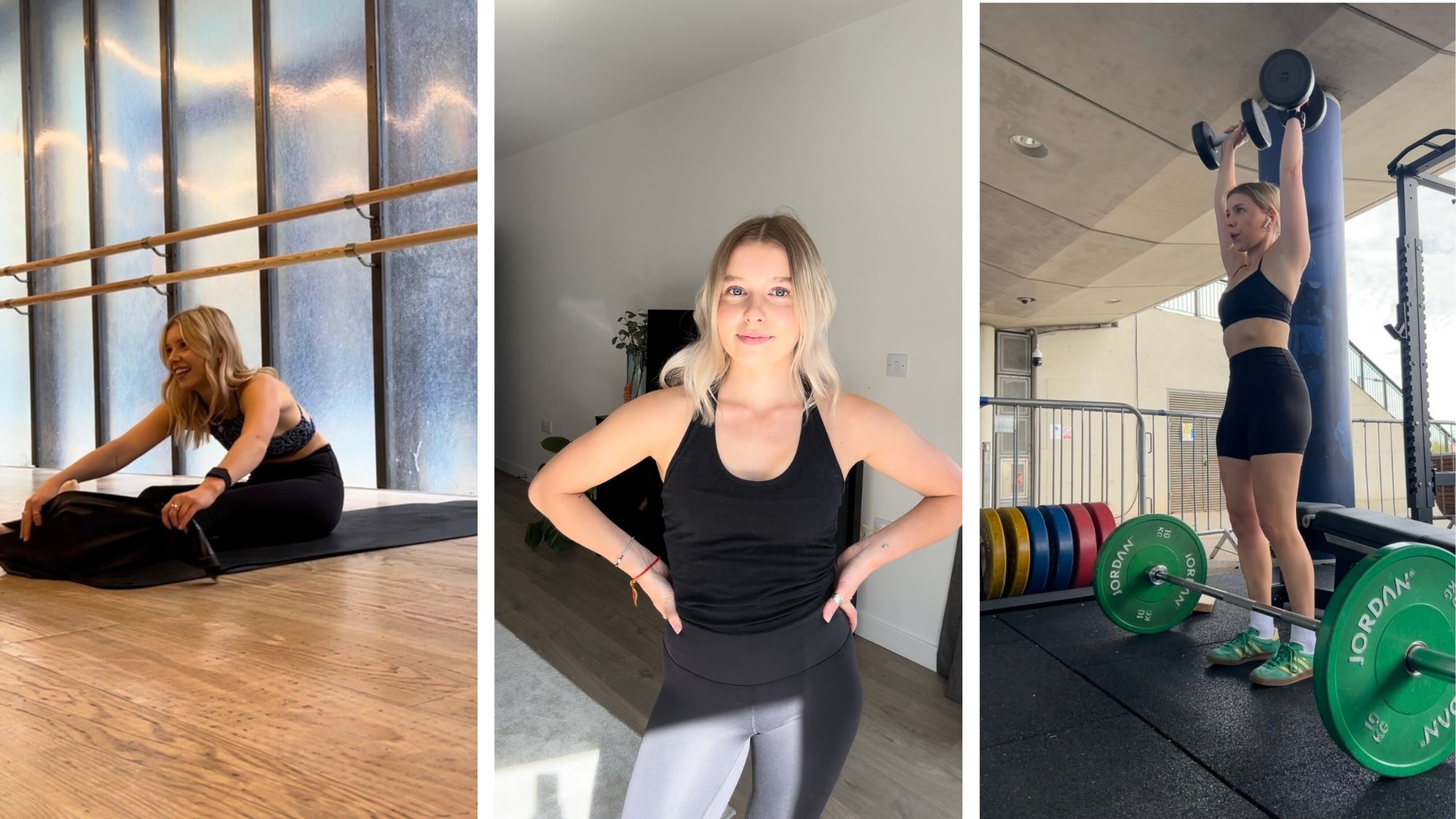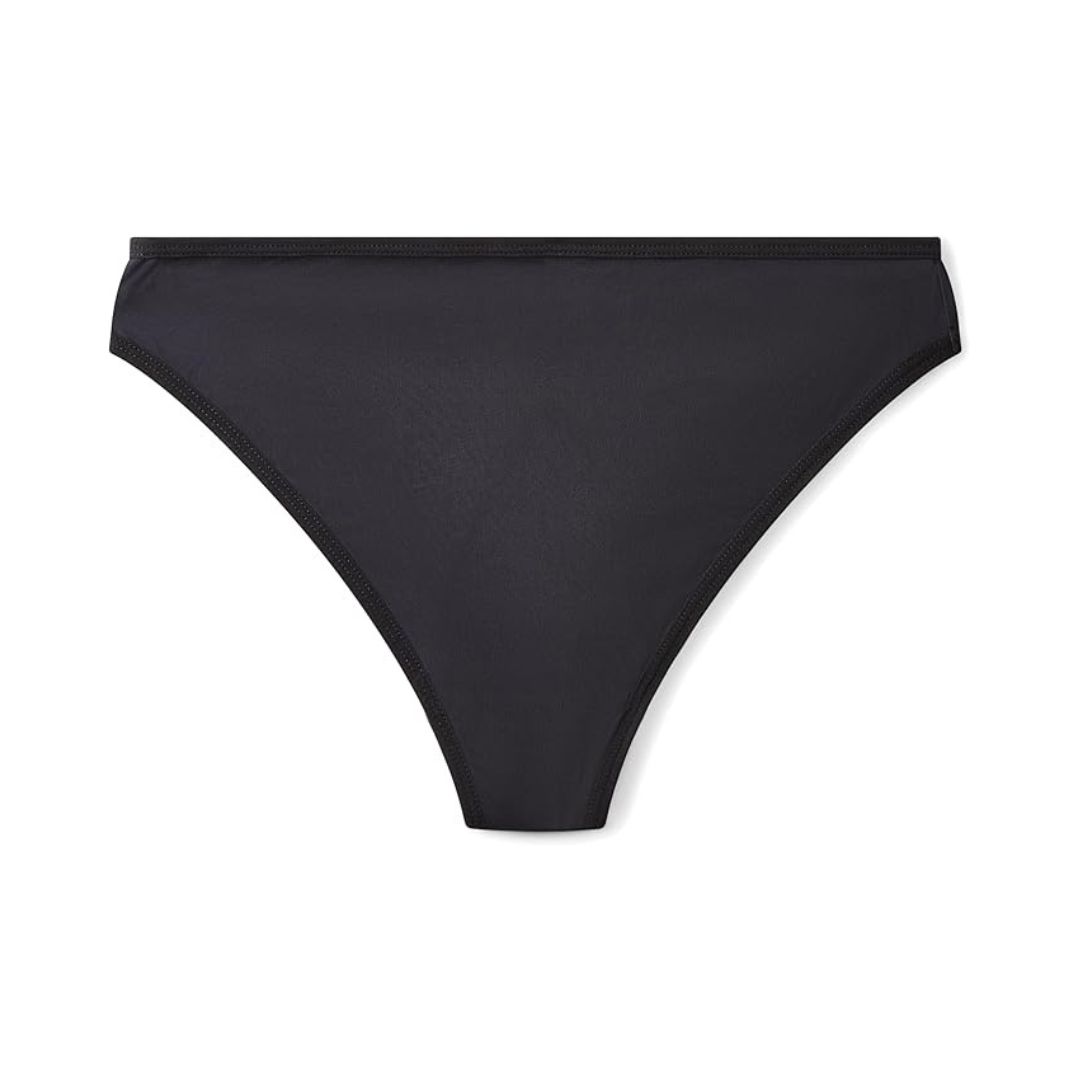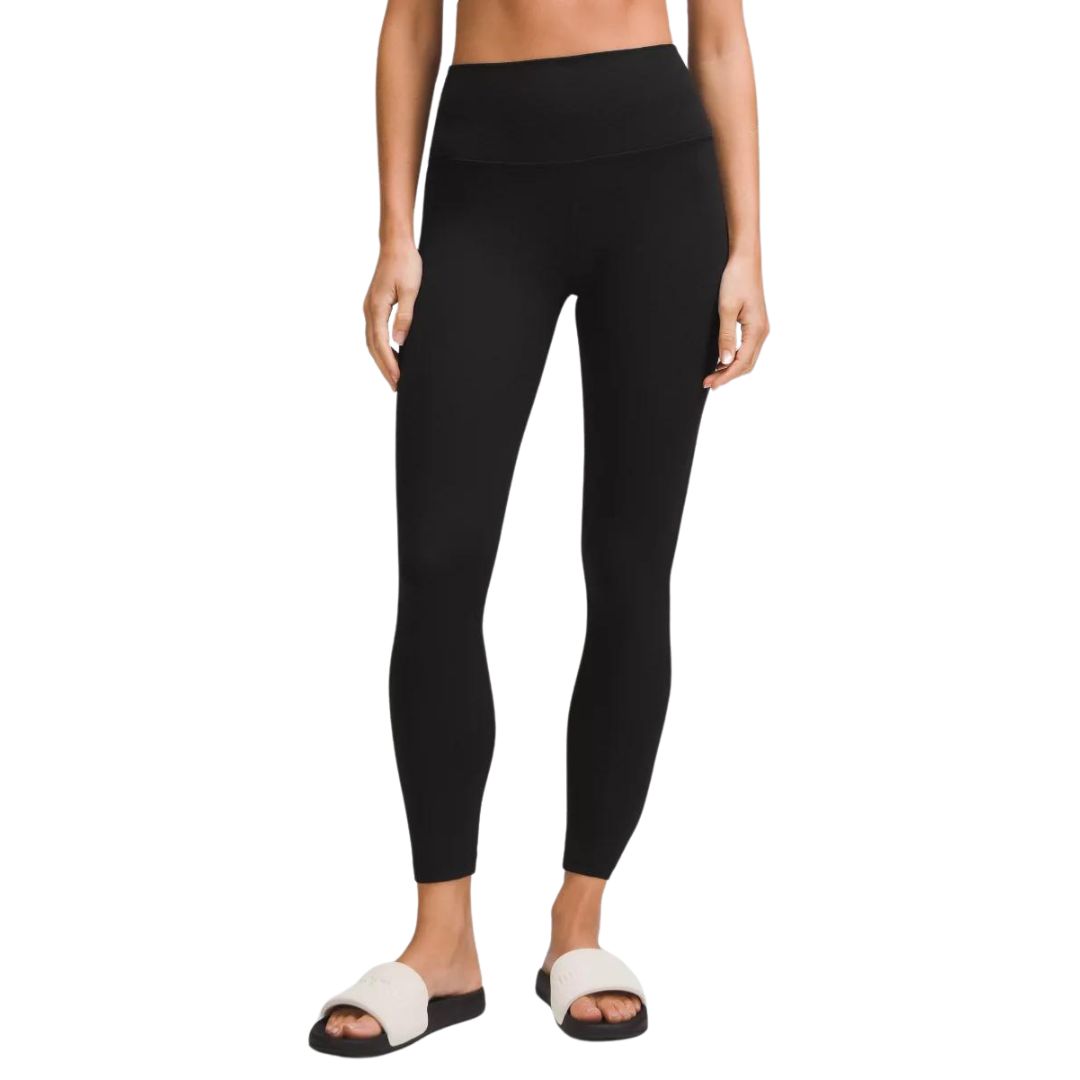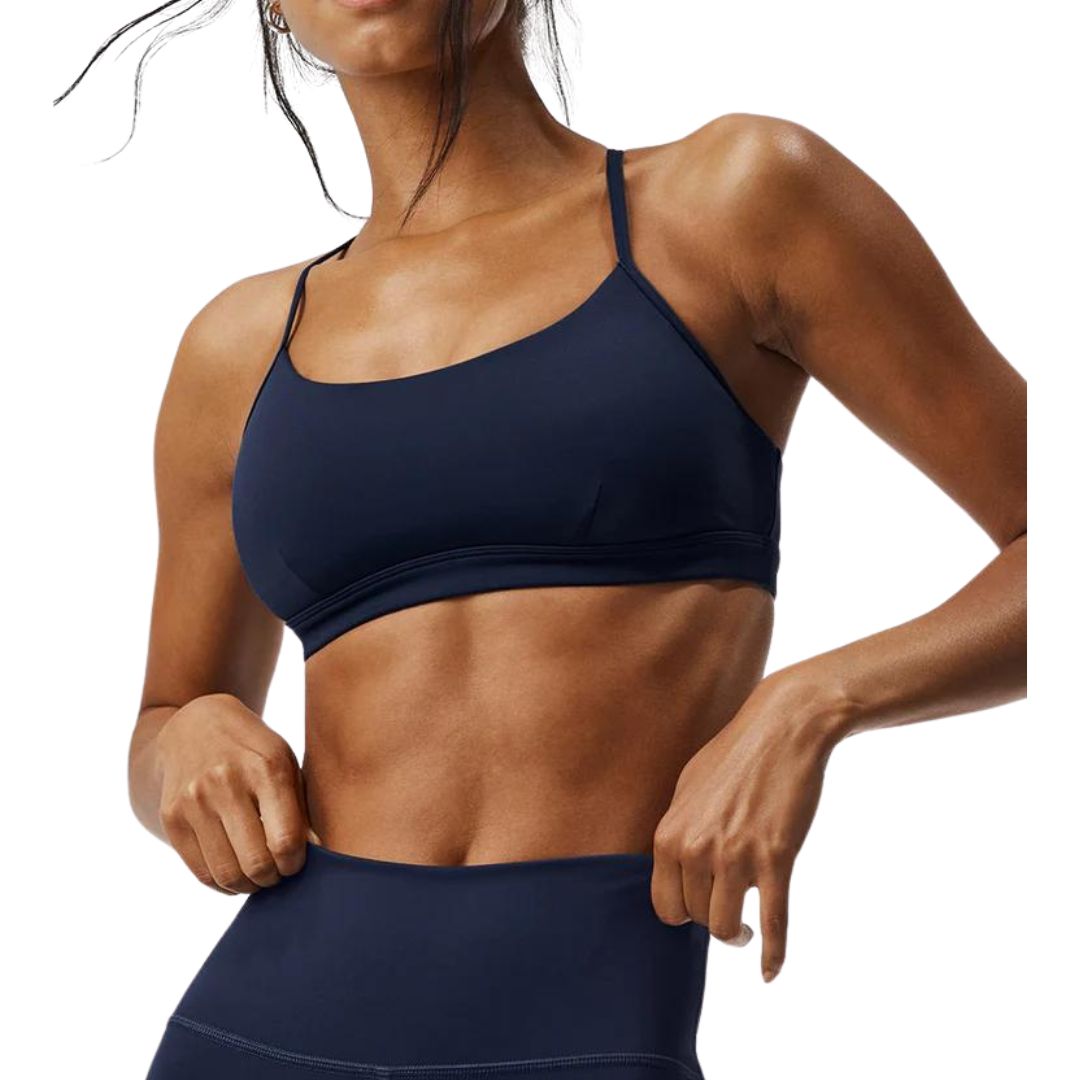I'm a Health Editor who doesn't believe in training around your cycle - here's what I do instead
Matching your workout to your period phase works for some, but not me.


Cycle syncing is everywhere at the moment. There are over 55 million posts about training around your cycle on TikTok and Google searches have risen by 40% over the past couple of weeks.
Not sure what the term actually means? "Menstrual cycle syncing is a practice in which women who menstruate adjust their diet, exercise, and daily activities to align with the different phases of their menstrual cycle," says Dr Hazel Wallace aka The Food Medic, a medical doctor and women's health expert.
People claim it's useful because we feel different at different points in our menstrual cycle. First comes menstruation, which starts on the first day of your period. Then there's the follicular phase, aka the week during which your body is preparing to release an egg and estrogen levels are rising. Mid-way through the cycle comes ovulation when the egg is released and hormones such as LH and FSH are high. Then, if the egg is unfertilised, your luteal phase begins, where your hormones drop and an egg and lining of the womb can shed.
And, with each different menstrual cycle phase comes different hormone levels and, in turn, emotions. You've likely noticed when you feel your best and worst during each month, right? Cycle syncing, in short, means leaning into those feels and adapting your lifestyle habits to match, particularly your exercise. "The idea of cycle syncing is to optimise energy, mood, and performance by working with the body's natural hormonal fluctuations rather than against them," explains Dr Wallace.
Sounds great in theory, right? I agree. But, being honest, I'm an industry expert who doesn't personally get on with cycle syncing or recommend you give it a go. Below, I explain why, plus what to do instead, with the help of Dr Wallace.
Keen to read more? Our guide to how your period affects working out will come in handy, as will our guides to the best period pants and yoga for period pain.
I don't believe in training around your cycle: your guide
What is cycle syncing?
The basic suggestion around cycle syncing is that we should push ourselves when our hormones are high and pull back when they are low. As Dr Wallace explains: "In your late follicular phase, aka the phase after your period until ovulation, your oestrogen levels are high and you may feel strong and energised, so generally people say this is the best time to get a personal best."
Celebrity news, beauty, fashion advice, and fascinating features, delivered straight to your inbox!
In comparison, she continues, your luteal phase, which happens after ovulation and until your next period, might be the opposite ."PMS symptoms also might start to creep in that impair exercise performance," she continues.
A post shared by Dr Hazel Wallace BSc MSc MBBCh (@thefoodmedic)
A photo posted by on
What are the main issues with cycle syncing?
On the surface, the above advice isn't bad at all. I'm a big proponent of resting when your body is telling you to rest and pushing yourself when your body is raring to go. That said, I regularly see a few big issues with how cycle syncing is portrayed online.
Firstly, people get very prescriptive with their cycle-syncing workouts. For instance, there are programmes that suggest you do bodybuilding work during your period, strength training in your follicular phase, HIIT when you ovulate and yoga and Pilates during your luteal phase. That kind of jumping around with workouts is fine, if you enjoy it. But it's not useful for those who want to build consistency or hit goals that require focusing on the same type of movement time and time again.
Secondly, cycle syncing isn't actually that scientific. "The research at current is limited and often mixed — some studies show changes in how you exercise and recover, while others don’t see any difference," notes Dr Wallace.
Of course, just because the evidence isn’t clear doesn’t mean your experiences aren’t real. If you always feel a certain way in your cycle, adjust your training accordingly. "In the end, you know your body better than anyone, so pay attention to how you feel and use any advice as a guide, not a hard rule," says the doctor.
Which brings me to my final point: I hate the thought that someone won't be using their body at a given time in the month because they feel as though they shouldn't even though they absolutely can. Similarly, I hate the idea that someone is doing a tough workout because they're told it's the time of the month they should be thriving, but they're actually knackered.
There's research to suggest that the real changes in our cycle come from changes to our mental state, rather than our physical state. Which is to say, the more we hear that we can't do hard things at certain times of the month, the less we'll feel capable of doing them.
"I'm a Health Editor who doesn't cycle sync - and for good reason"
One of the personal reasons that I don't cycle sync is the fact that I have problem periods. Some months I'm able to function normally week after week, while others leave me wiped out for days at a time. This makes it pretty hard to stick to a rigid schedule of when and how to move.
My work and life are also pretty chaotic, so varying different styles of training across the month feels like another thing to juggle. I much prefer sticking with the couple of workouts I love and feeling myself progress within them. Not to mention, if I have a busy week where I barely get to move, I don't want to be told I have to take the intensity down in the following days just because I'm due on my period.
However, I do get intense period symptoms. My scoliosis paired with period pain often means my lower back feels inflamed and achy, while I'm just as susceptible to low energy and a poor mood as anyone else. But instead of switching up all of my workouts or my efforts around my cycle, I am a big believer in small hacks that can make movement feel easier and still empowering.
1. Opt for supported exercises
I know that there are certain exercises that don't work for me when I am already struggling with back ache as I do on my period.
These include barbell squats as I find loading weight on my already-sore spine to add extra discomfort. For that reason, I opt for goblet squats - the weight loaded at the front of my body for less tension on my back - or a leg press, which offers back support.
This simple switch allows me to keep my weights high and my training fairly intense without the pain.
Back ache is thought to impact about 72% of people with painful periods, so if you're finding that it's making you feel like you can't train, try swapping any triggering exercises for a movement with more support.
2. Take longer rest breaks
Low energy is a common problem around your period and there's a fine line between exercising to give you a much needed boost and wearing yourself out even more.
The week leading up to my period can be exhausting, but if I want to move and feel accomplished with a good workout, I use this trick to avoid exhausting myself: longer rest breaks.
Typically, I might rest for one to two minutes between sets. But if I'm feeling like recovery is hard, I'll take closer to five minutes.
It means that my heart rate and muscles have time to settle before I get moving again and, I find, it helps me finish the workout feeling refreshed rather than drained.
3. Focus on activation
When I'm feeling down in the dumps thanks to my hormones or dealing with some PMS aches and pains, warming up becomes even more important.
I'll always take a moment to figure out if exercise is actually what my body and brain need, rather than force myself through a session regardless. Then I'll spend extra time getting into the zone.
A wandering mind can sometimes mean I don't pay full attention to my movements, and discomfort can stop me from feeling fully present in my body. So I spend extra time centring myself with breath work and stretching. I also spend extra time activating more core to make sure I can properly engage my abdominals to protect my spine. I also find gentle abdominal exercises can ease my stomach pain.
Mind-to-muscle connection is also important in your workout but can slip when you're not feeling yourself. So I spend extra time activating the muscle I will be using in the session. That might look like glute bridges for lower-body days or banded shoulder exercises for upper-body days.
Bottom line: How you move your body is unique to every individual. Instead of sticking to arbitrary rules, why not try to tune into your energy levels and how you're feeling each day and choose your movement from there?
MC UK-approved kit for exercising around your period

Chloe Gray is a freelance journalist who writes and talks about health, fitness, and wellbeing through a feminist lens. She was part of the launch team for Stylist magazine's fitness brand, Strong Women, and has written for i news, Women's Health, Red magazine, Good Housekeeping, Refinery29, and more. She's all about building mental and physical strength, eating delicious food that fuels you well, and making the fitness industry more accessible and enjoyable. She's also a qualified fitness trainer and research nerd, so you can be sure everything you read is backed by proper science.


